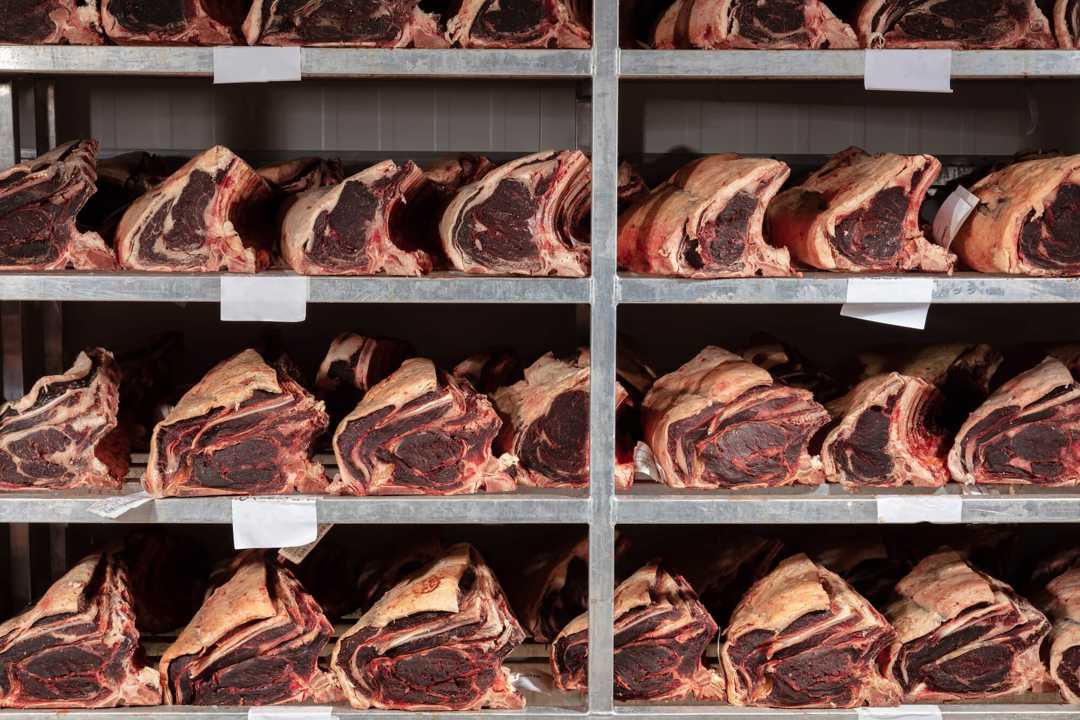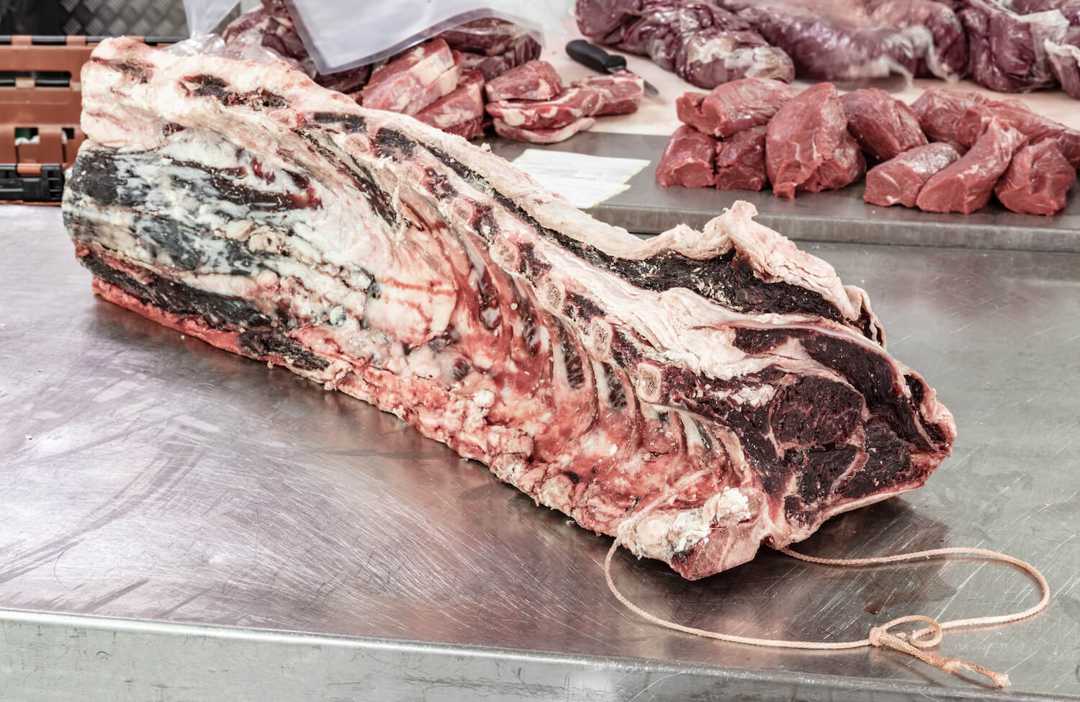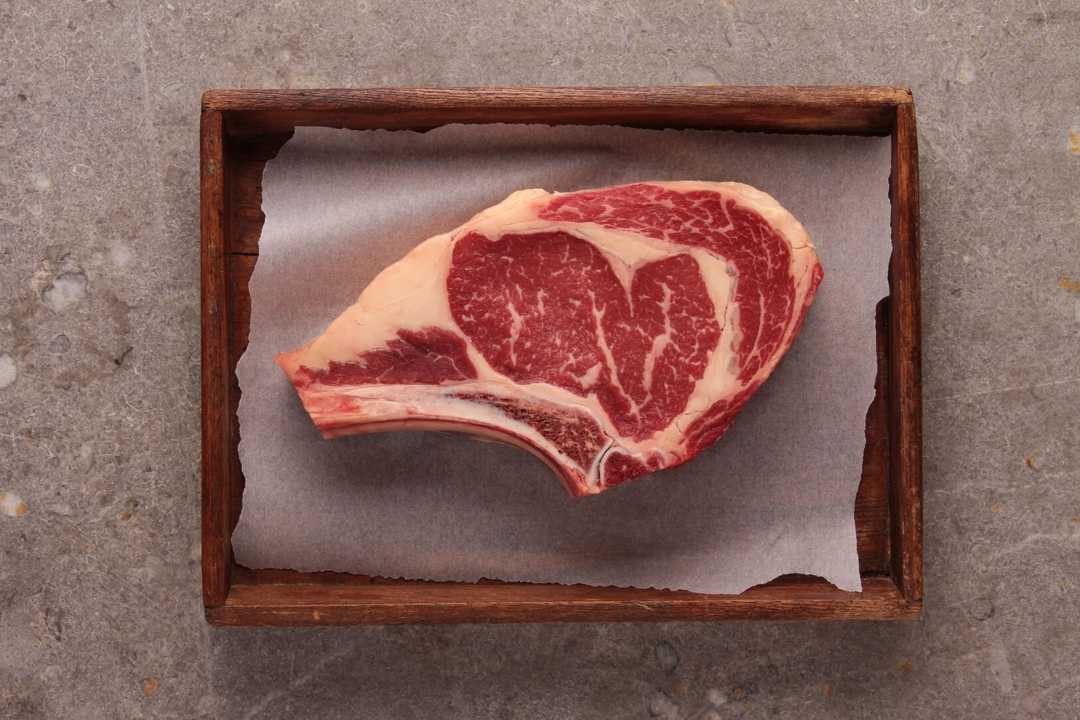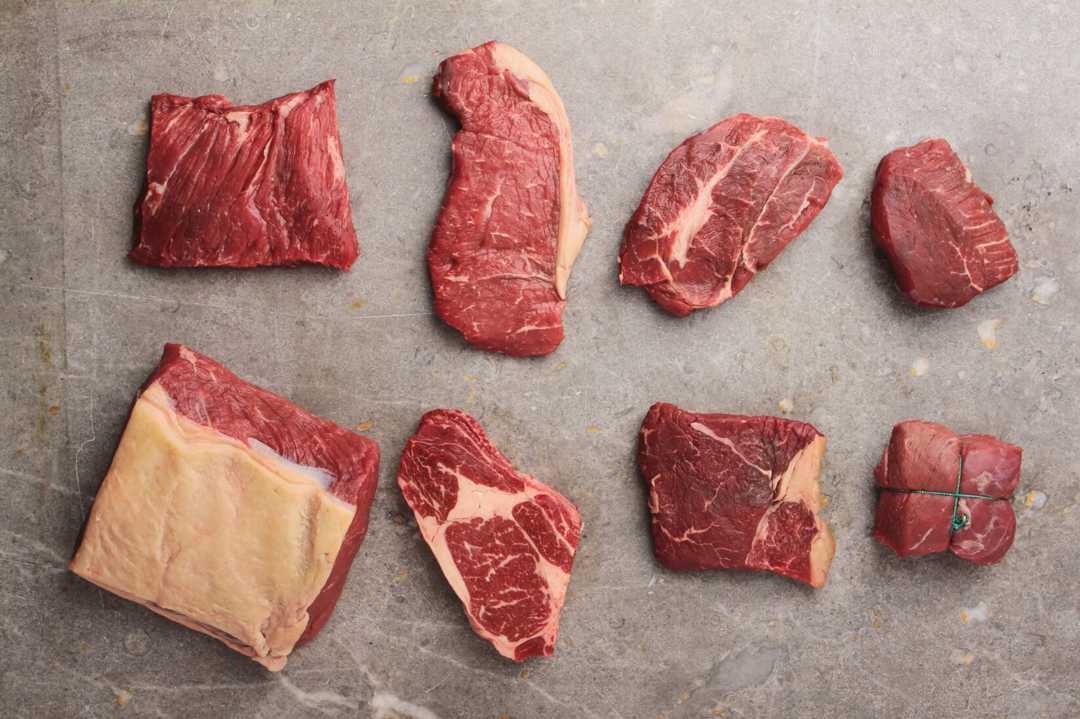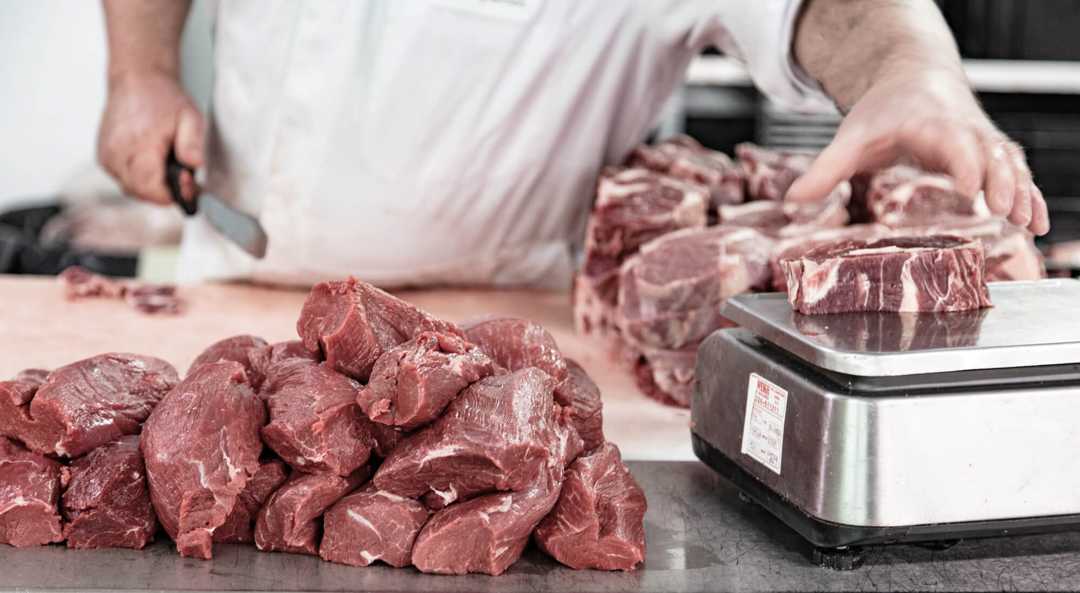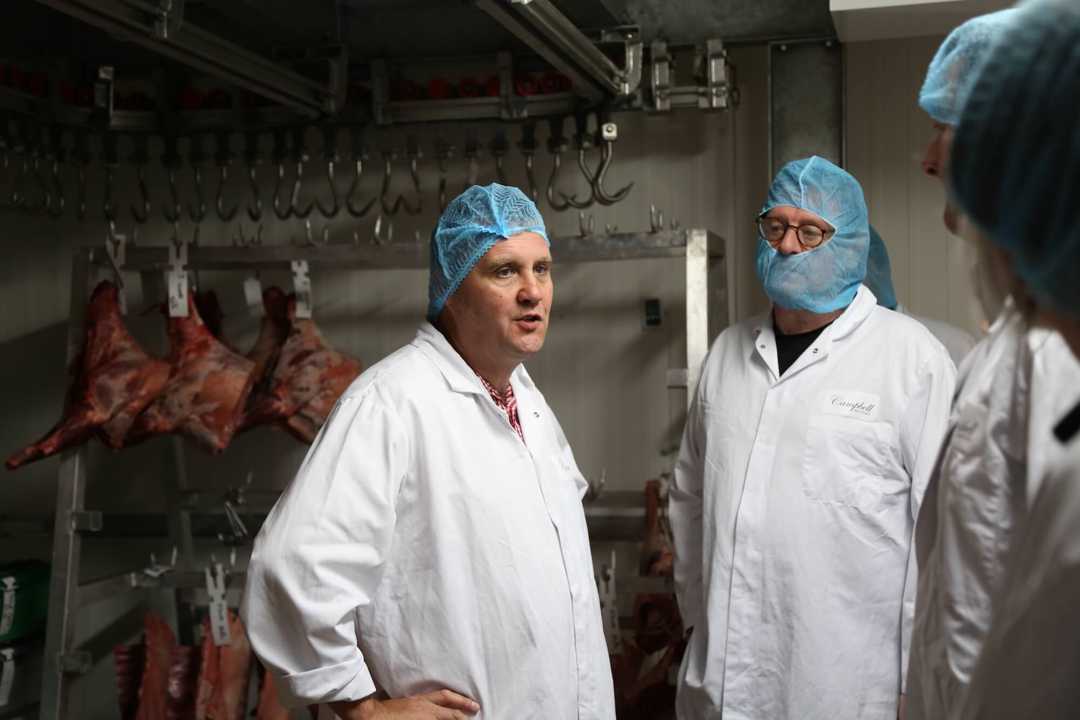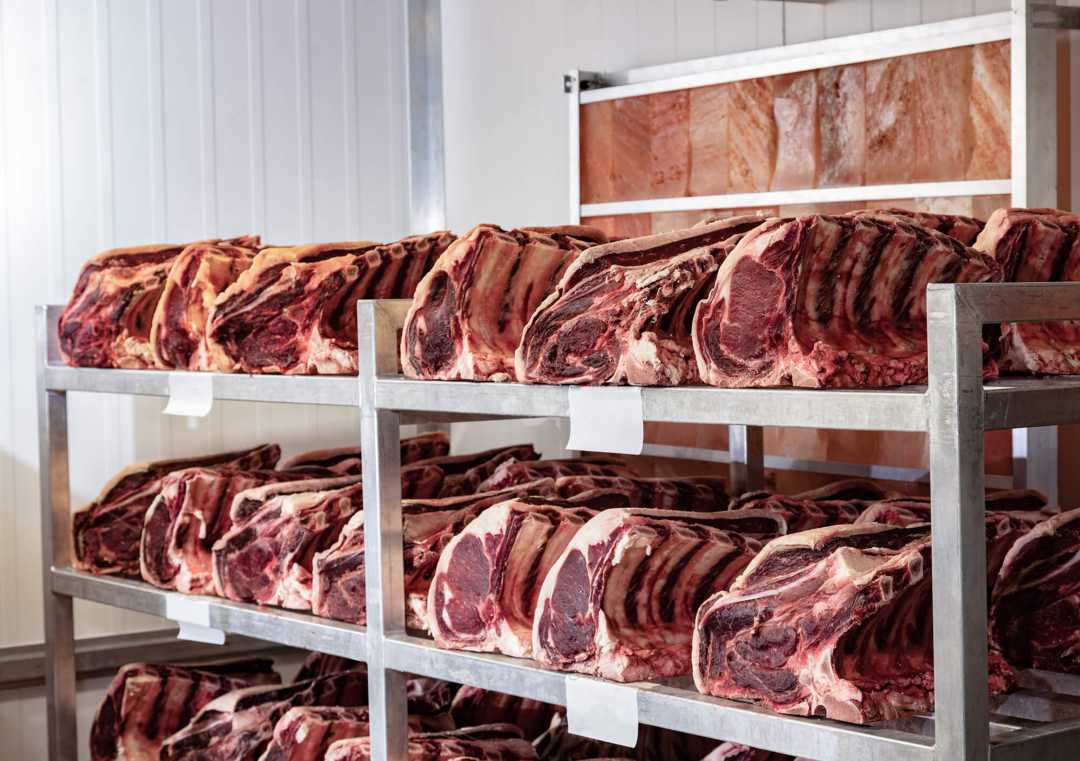Discover more about our beef with our guides on types of products and processes.
Finest quality beef
As dedicated wholesale beef suppliers, we are passionate in supplying high-quality meat to caterers. Our beef is excellent quality, making it the top choice for chefs in some of the country’s finest restaurants.
Become a CustomerBeef Cuts Guide
Select a cut first
Main cuts:
Ox cheek, also known as beef cheek, is a tasty cut of meat taken from the muscles in a cow’s cheek. The cow’s grazing works the cheek muscles well, producing a firm dense meat with a deep rich flavour, perfect for braising and stewing.
Ox tongue, also known as beef tongue, is a tasty and flavourful meat, commonly used in Asian and Mexican dishes. Ox tongue may be overlooked, but is best enjoyed when slow-simmered to bring out its full richness.
Main cuts:
Also known as, the ‘feather blade’ steak, the flat iron is a very lean cut with little trimmings of fat specifically prepared from the feather blade muscle. Its obscure name is due to the texture of the tissue in the muscle. Although small, it is still extremely flavourful, lean and tender.
Feather blade is the name of the entire muscle from the chuck section of the steer, located in the shoulder of the cow. This muscle produces ‘feather blade’ or ‘flat iron’ steaks.
The chuck consists of the shoulder and upper arm, as well as the bottom of the cow’s neck and first 5 ribs; all of which are well used muscles and produces a large cut that is best for slow-cooking or tenderising.
Secondary cuts:
Beef daube, or chuck steak, is an affordable, boneless cut ideal for braising. It comes from the well-used muscles in the shoulder area and, with proper cooking, can be tender and flavourful. Despite its firm texture, it has great potential for high-quality dishes. The beef daube specifically comes from the area between the shoulders, but underneath the blade.
Mince meat, also known as ground beef, can be sourced from any part of the carcass. Each part gives a different flavour and fat content, perfect for creating burgers and ragu bases.
Diced beef from the chuck is often regarded as the best for diced meat, giving flavour and tenderness when cooked with a rich flavour that is fantastic for casseroles, pies and slow cooked dishes.
Main cuts:
The ribeye is cut from the “primal rib” section of the cow, a large single cut where the muscles are less active, resulting in a tender piece of beef.
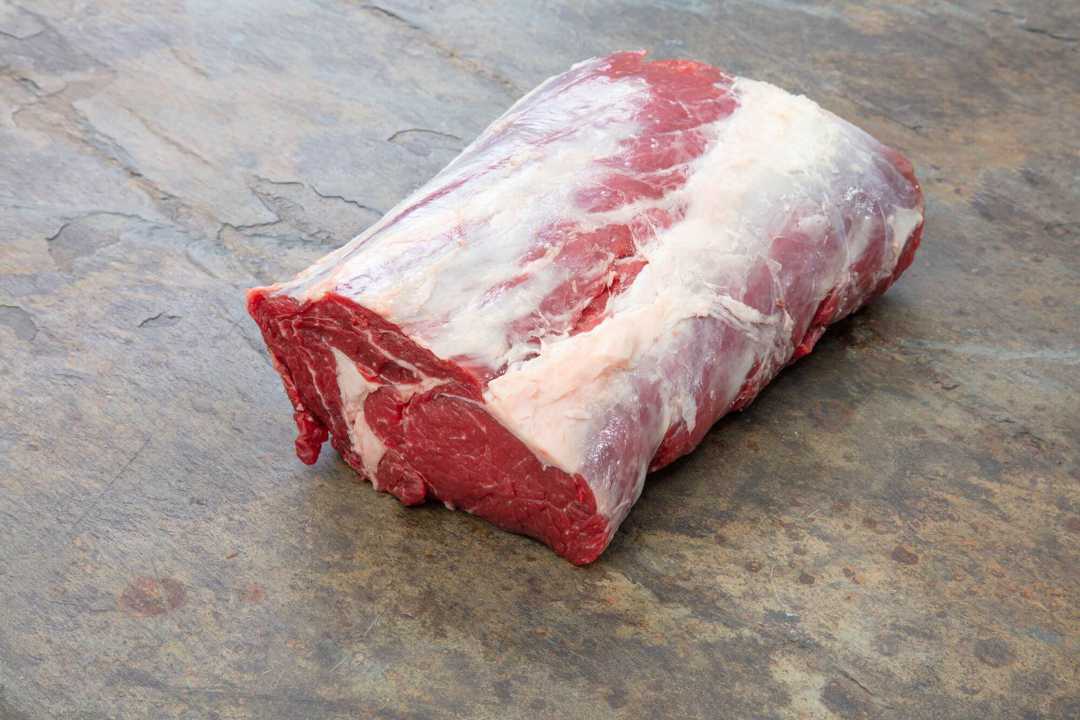
Rib cap, also known as ribeye cap steak, is a boneless, luxurious cut often overlooked in favour of ribeye. Rib cap steak is a cut of meat that sits on top/caps the ribeye on the outer-rim of the prime rib roast. It is a loose piece of meat on the outside edge and is separated from the main, larger chunk of meat in the roast (the eye) by a strip of fat. A rib cap steak is separated from the piece of meat entirely, leaving the eye as a rib fillet.
A forerib steak from the steer’s ribs, is tender, juicy, and flavourful, available bone-in or boneless. Similar to ribeye, it has high marbling and a deep beefy taste. Forerib cuts are versatile as they can tolerate different cooking methods than most other steak cuts and still be just as delicious.
Secondary cuts:
Ribeye steak, known as the ‘King of steaks,’ is prized for its tenderness, rich flavour, and marbling, making it a popular and impressive cut. Sourced from the top of the rib section, it’s boneless and naturally tender due to its location near less exercised muscles. Its high marbling enhances juiciness, though it tends to be more expensive.
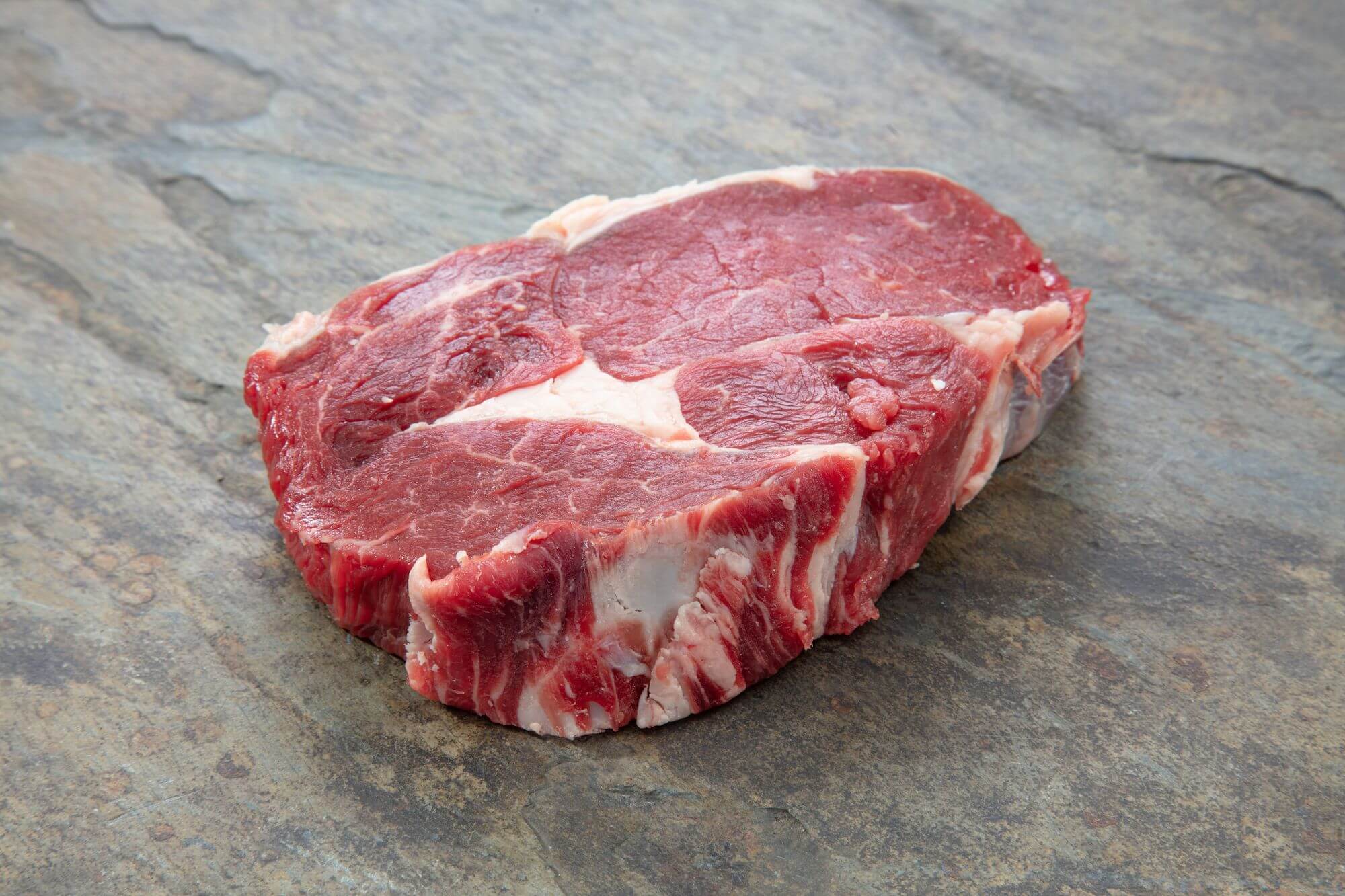
Main cuts:
T-bone steaks are cut from the short loin section of the carcass in the middle back of the steer where the tenderloin and short loin meet; same as the porterhouse cut. However, T-bones are cut closer to the front of the section so contain less of the tenderloin steak than a porterhouse does.
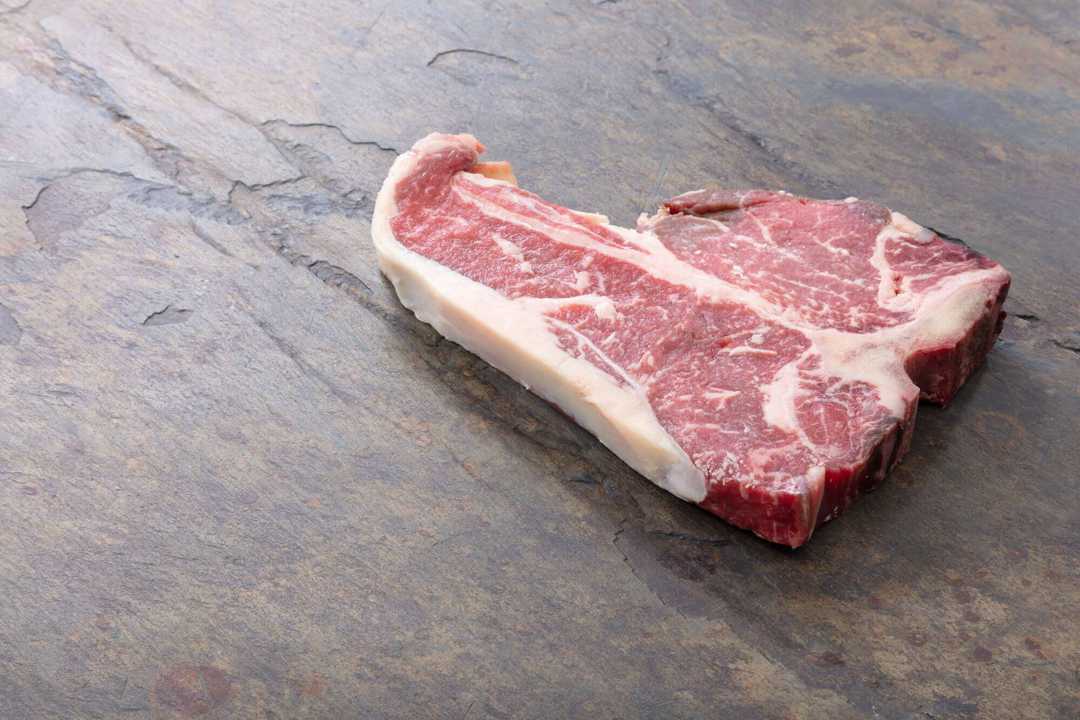
Porterhouse steaks are centre-cut from the hindquarter of the steer at the rear-end of the short loin, specifically, the area where the tenderloin and short loin meet, therefore is both a fillet and strip steak separated by a bone. This high-quality cut is juicy, tender and large in size, making for a lovely meal for 2 and a show stopping centrepiece for a dish.
The striploin runs along the spine in the hindquarter, stretching from the ribs to the rump, and is celebrated for its rich, beefy taste. As a muscle that does little work, it is highly marbled, which enhances its flavour.
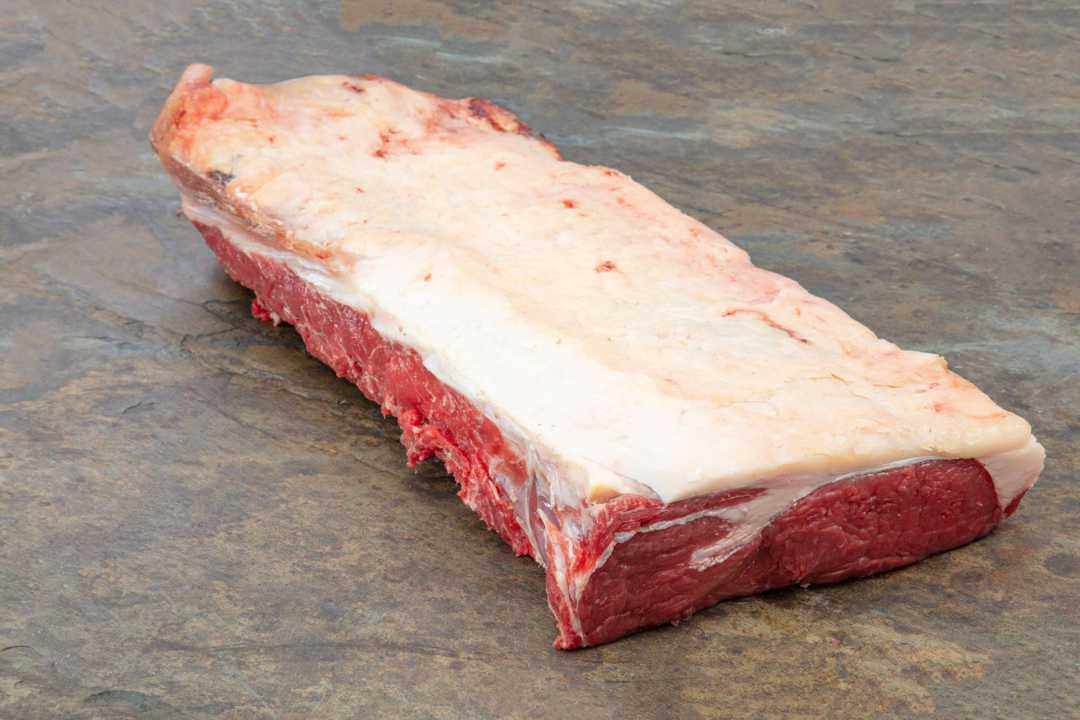
The tenderloin is oblong in shape and spans horizontally from the sirloin, which is towards the back end of the animal to the short loin which is nearer the middle. The tapered end of the tenderloin is cut from the short loin whilst the other end is cut from the top sirloin.
Secondary cuts:
Fillet is a thick, lean cut of steak with little intramuscular fat and is the most expensive of all steak cuts. The fillet is from the tenderloin of the steer, which is cut from the loin of the cow and is considered the tenderest part of the cow as it doesn’t bear weight.
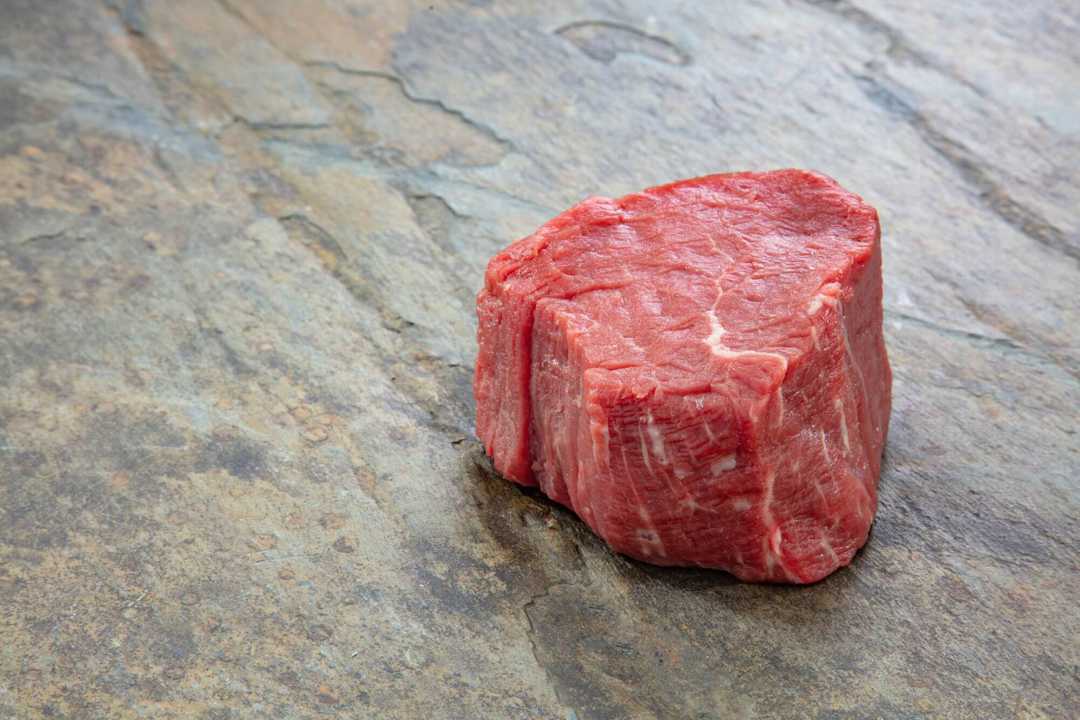
The Chateaubriand is a large chunk of tenderloin that produces the tenderest steaks on the carcass. It is extremely lean and has versatile cooking methods. This is a cut so luxurious it is used as a phrase to describe ‘the best of the best’ and must always be capitalised when spelled, so you know it’s a good cut!
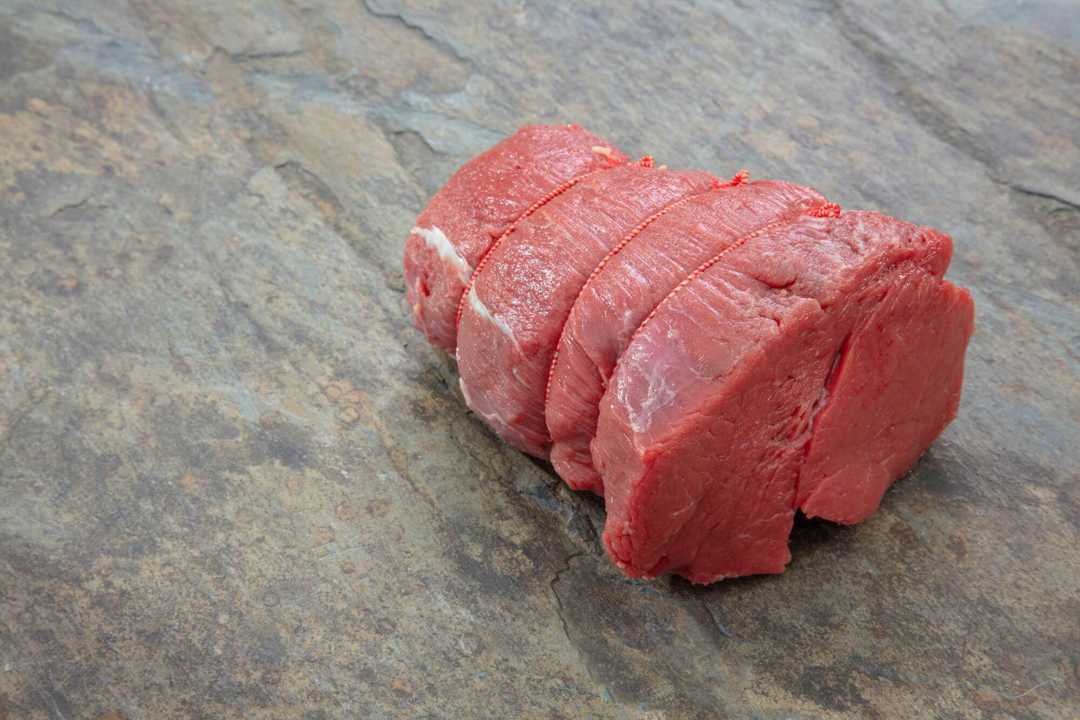
Sirloin steaks are boneless cuts from the middle to back end of the cow and the meat is usually lean with larger fibres. The sirloin is perfect for lean steak cuts.
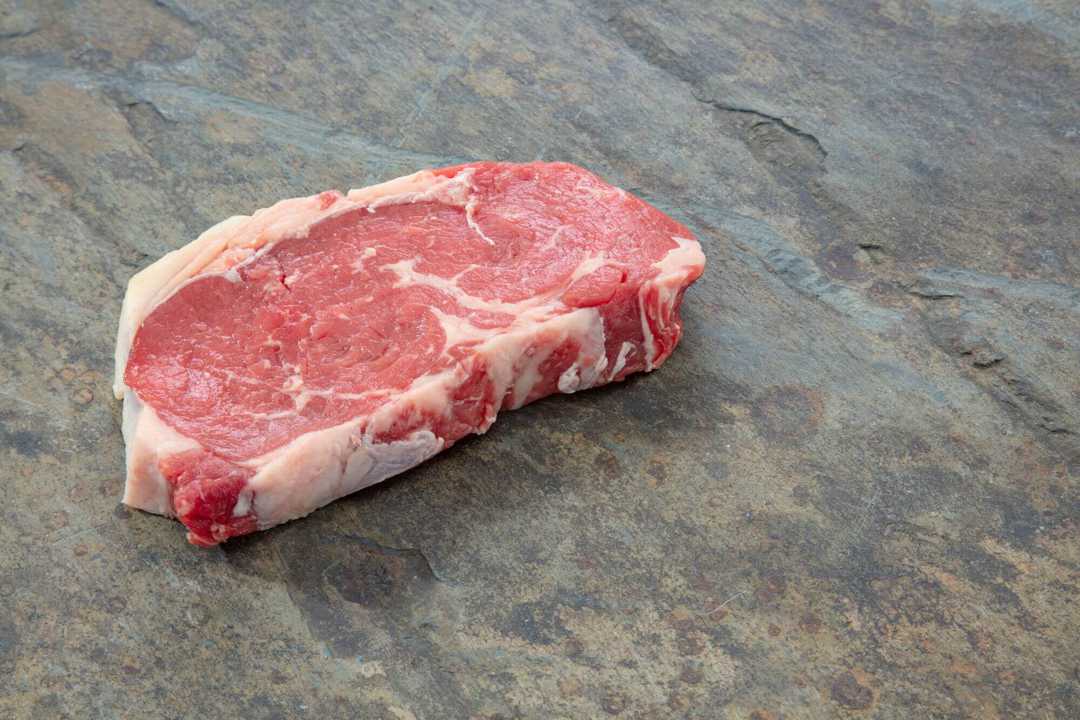
Main cuts:
Minute steak is a thin, quick-cooking cut that can be flavourful with proper preparation. It’s versatile and budget-friendly, ideal for pan-frying, grilling, sandwiches, and stir-fries.
Topside beef is a cut taken from the upper part of the hind leg and is a versatile, boneless cut that is well-suited for roasting due to its tenderness and taste, although it can also be sliced thin for stir-fries or cooked slowly in stews and other dishes.
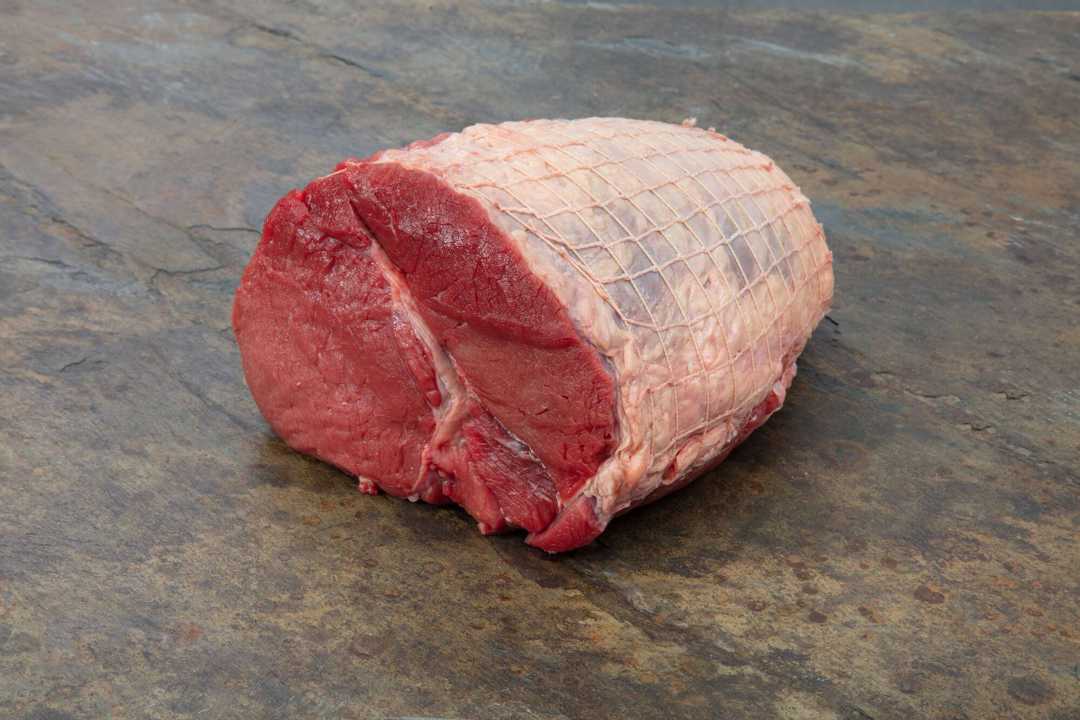
Beef silverside is a lean, boneless cut of beef from the area above the leg with a course texture. Its distinctive silver-coloured membrane on one side inspires it’s name, and is excellent for slow-cooking methods.

Braising steak comes from tough, heavily used muscles. Slow, moist cooking breaks down connective tissues, making it tender and flavourful. Braising steaks can also be cut from the silverside or topside.
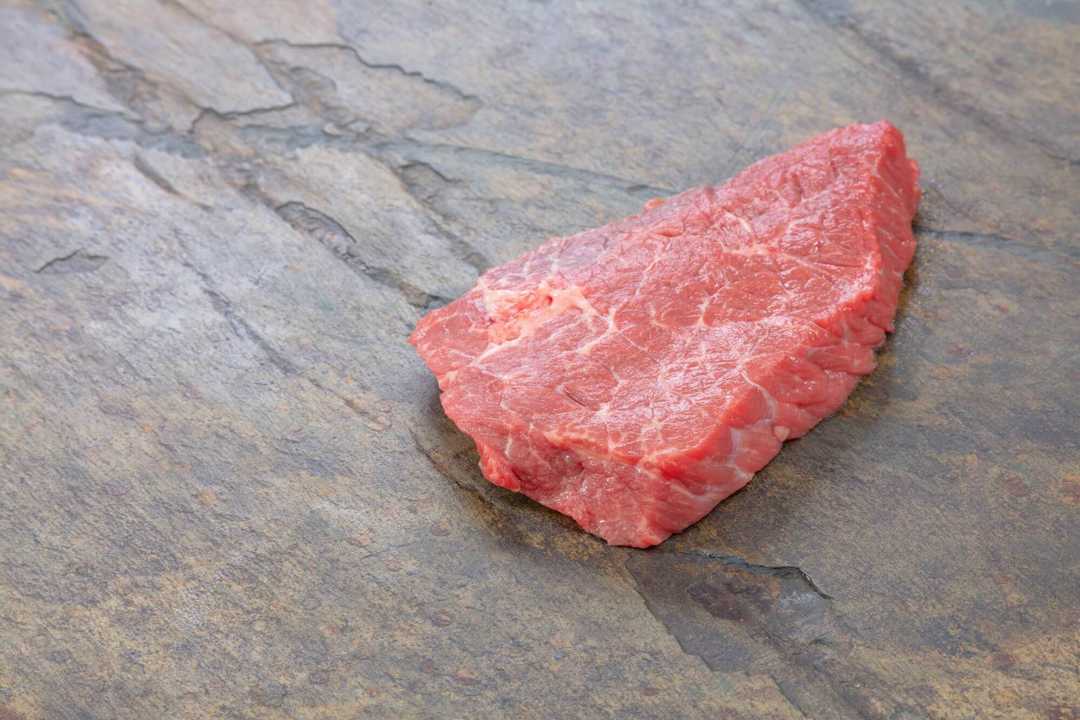
Secondary cuts:
All round cuts are great for roasting. They can be boned, including the ribs, or kept boneless and oven-roasted to break down collagen, then sliced thin for a perfect roast dinner.
Mince meat, also known as ground beef, can be sourced from any part of the carcass. Each part gives a different flavour and fat content, perfect for creating burgers and ragu bases.
Beef knuckle is a lean, boneless cut of beef from just above the knee of the cow. An underrated cut that can be used for roasts, steaks, kebabs, or stew meat.
Round beef is a lean cut from the hindquarters, specifically from the round primal cut. It is flavourful but tends to be less tender, so it tastes best braised or slow-roasted to break down connective tissues and enhance tenderness.
Main cuts:
The rump is cut from the hind section/ back leg of the carcass known as the round. Rump is a boneless cut and due to its texture and flavour, is a perfect steak for fajitas, kebabs and stir-fries. As the rump of the cow is a well-worked muscle the meat is lean and less tender than other cuts, but is still full of flavour.
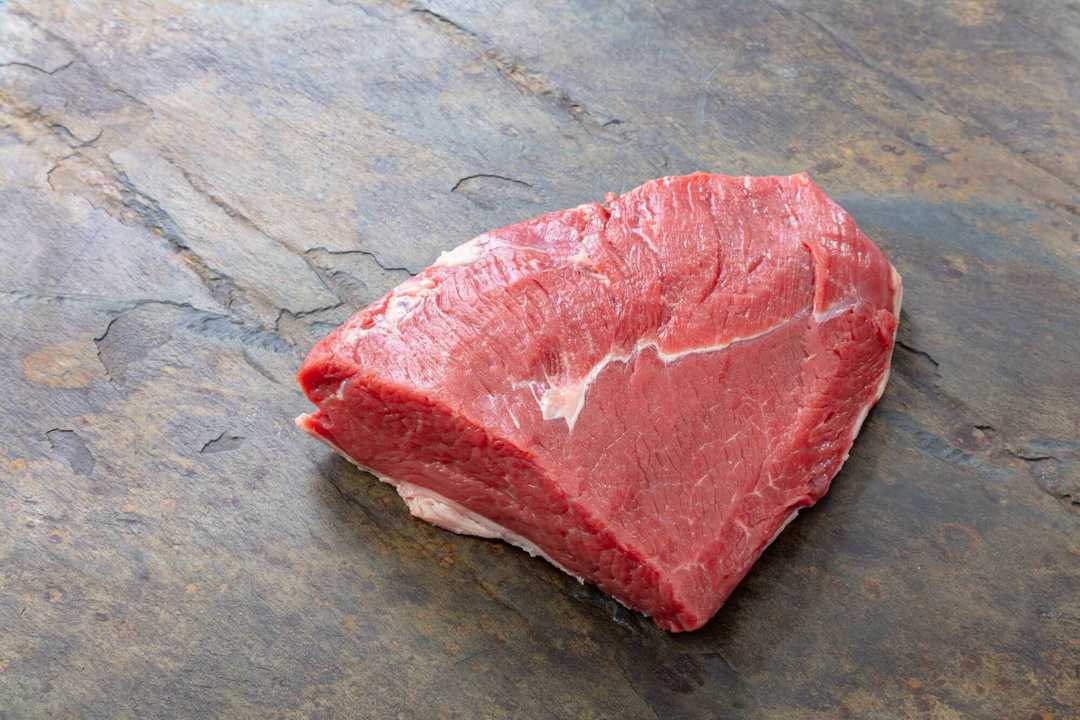
Picanha steaks are cut from the section of the carcass where the top sirloin meets the rump at the back end of the steer known as the rump/sirloin cap. Contrary to most steaks, picanha is cut with the grain to aid with tenderness in the final product.
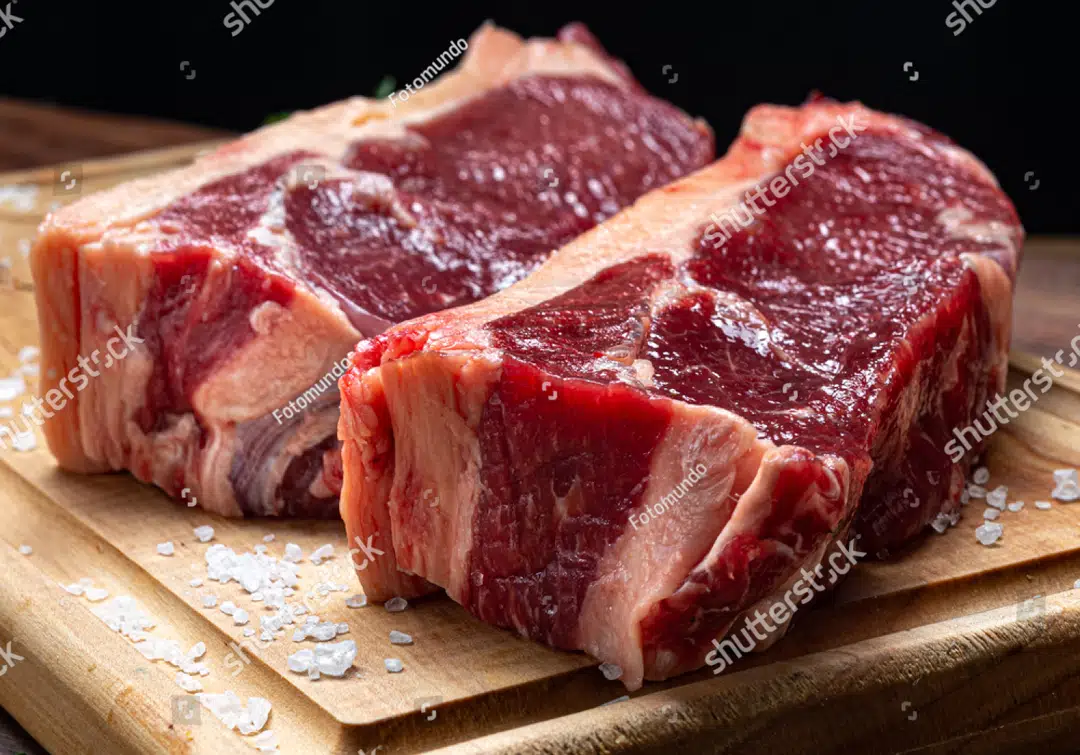
Secondary cuts:
Rump heart steak is a tender, virbrant red cut from the centre of the round primal, situated between the sirloin and topside. It is known for its tenderness and tight grain, and is excellent for roasts or steaks.
Main cuts:
Brisket comes from the cow’s chest and is a tough, well-exercised muscle rich in connective tissue. It’s sold as either a lean, flat “first cut” or a fattier “second cut,” with the latter offering more flavour for the infamous braised brisket.
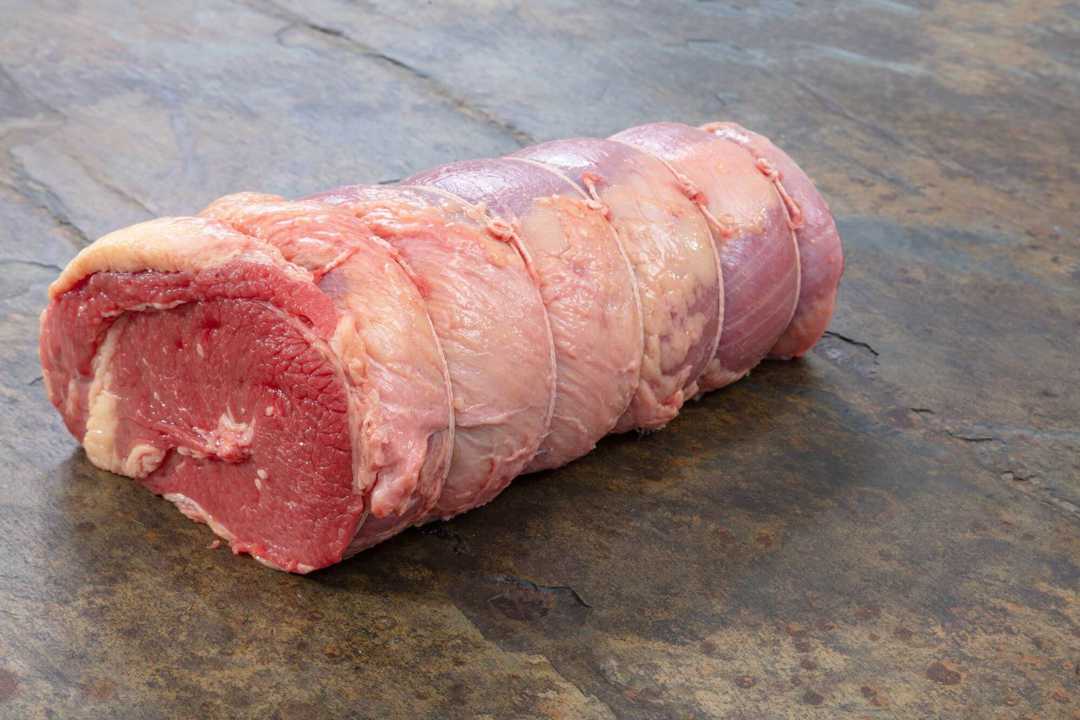
Secondary cuts:
Mince meat, also known as ground beef, can be sourced from any part of the carcass. Each part gives a different flavour and fat content, perfect for creating burgers and ragu bases.
Main cuts:
Bavette steak (also known as flank steak) is firm with a well-defined grain structure, cut from the flank of the cow, which is located in its lower abdomen at the front rear end. Although it is one of the more economically friendly cuts of steak, when marinated it can be very flavourful making for a tasty dish.
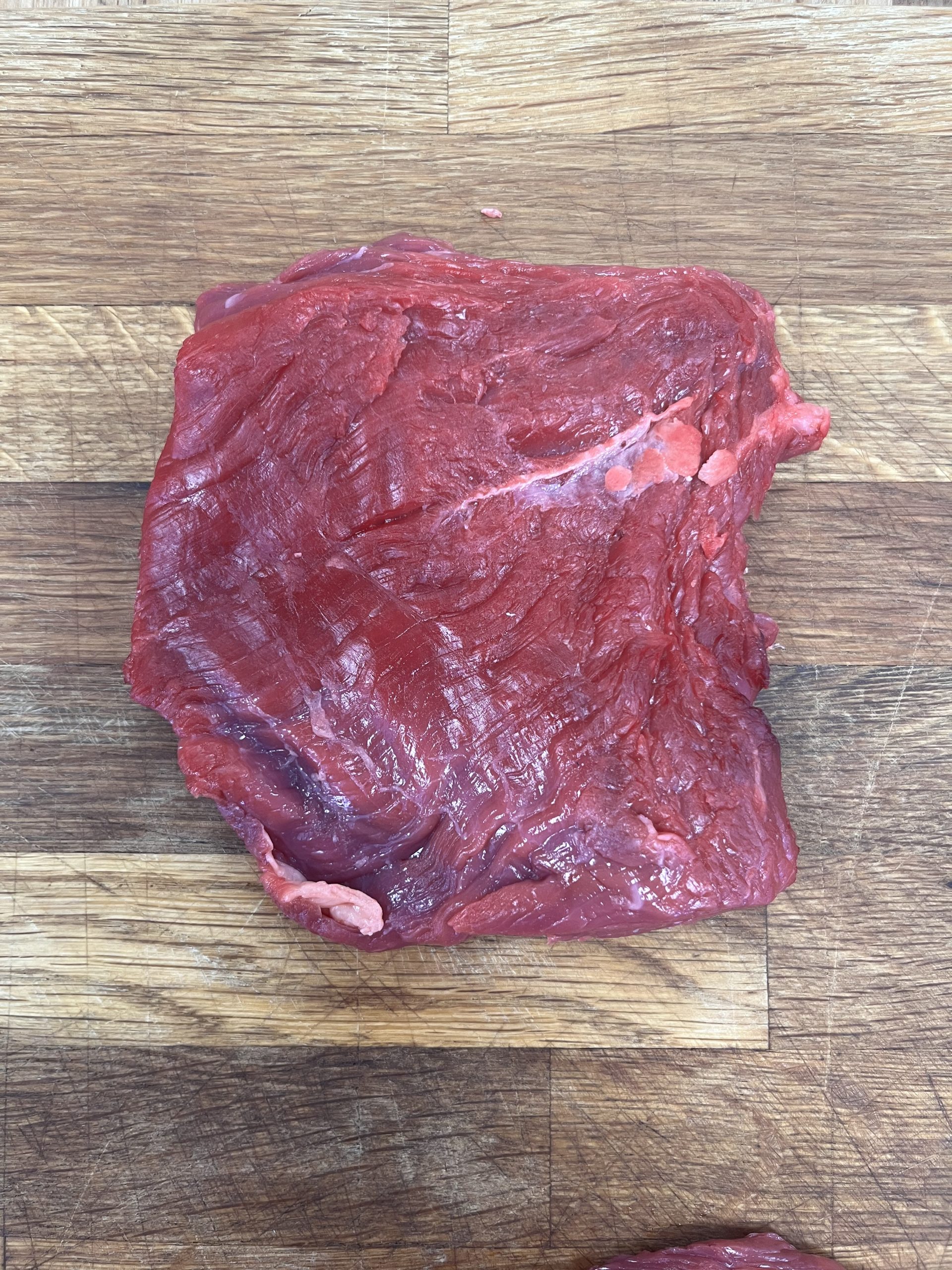
Skirt steak is the diaphragm from the underside of the cow, and is a long and juicy cut with heavy marbling and connective tissue. For optimal flavour, it is best cooked to medium-rare and sliced against the grain.
Rib flank, also known as flanken, is thinly sliced beef short ribs cut across the bones instead of in between, offering a rich flavour and good marbling.
Main cuts:
Shin beef is a cut sourced from the lower part of the front or rear leg. Since it comes from a heavily worked muscle, it contains little fat and has plenty of connective tissue, and can be purchased with or without the bone.
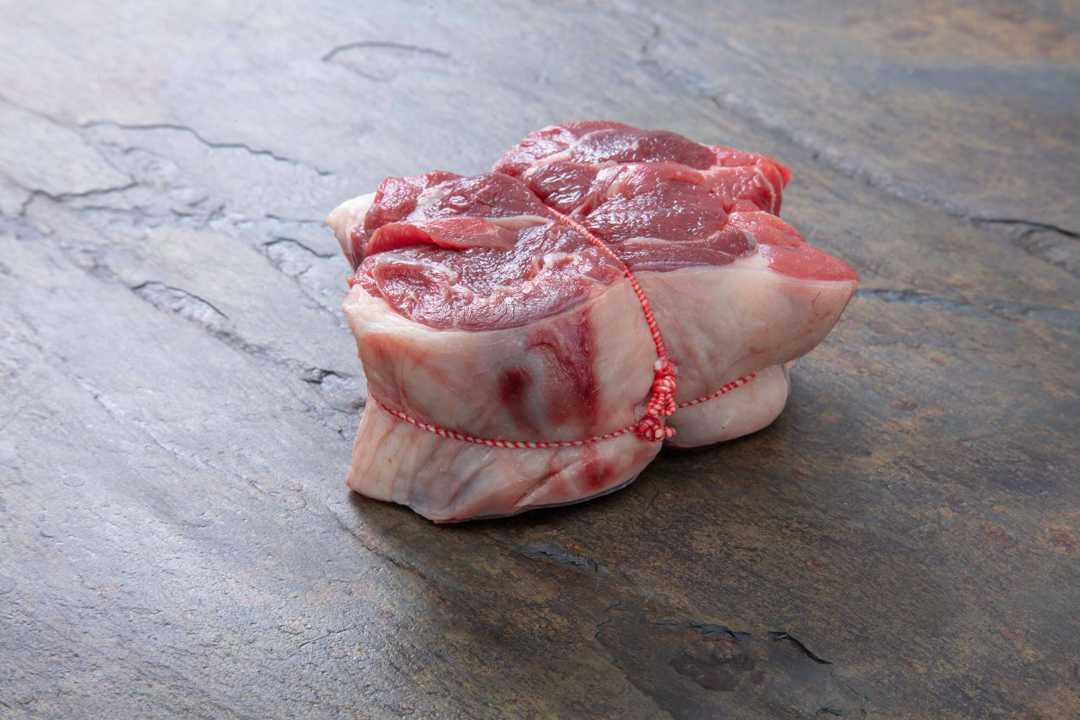
Secondary cuts:
Mince meat, also known as ground beef, can be sourced from any part of the carcass. Each part gives a different flavour and fat content, perfect for creating burgers and ragu bases.
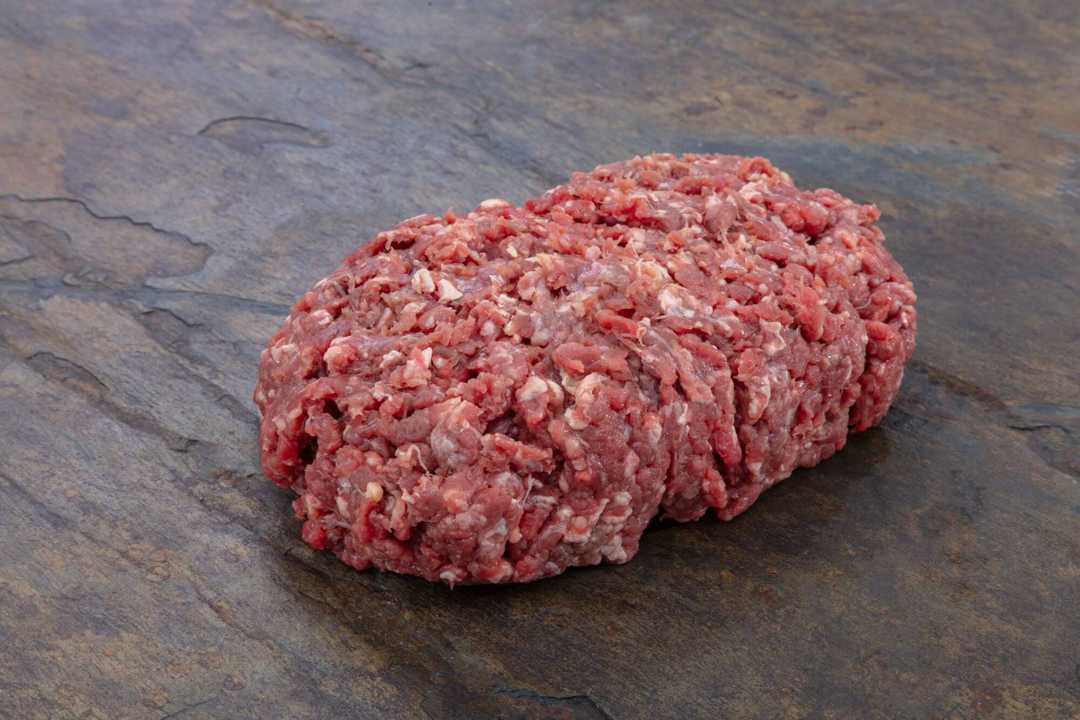
Main cuts:
Oxtail is a beef tail cut starting at the spine, with fat trimmed and tail bones removed before being cut into short joints. Despite its name, it’s from a cow, not an ox. It’s a tough cut rich in connective tissue that becomes a flavourful gelatin when cooked, perfect for soup bases.
All forms of beef for all types of catering
We offer a full range of beef to suit all levels of catering, from beef trim, beef mince, beef burgers – made on-site in our burger press, all cuts of steak, ribs of beef, dry aged beef, wet aged beef and right through to the full animal. Our range of products are designed to suit all types of menu for all types of establishment, from premium, top restaurants, to pubs, hotels, schools and care homes – we have beef to suit all price points.
Locally sourced meat
We believe great beef comes from well cared for animals, so our buyers work with approved suppliers to ensure quality and consistency in the beef we supply. We work with fantastic suppliers in the UK.
We procure from a selection of breeds across the UK & Ireland, including, Angus, Belted Galloway, Ruby Red, Shorthorn, Ling & Hereford cattle.
Campbell brothers are also proud to supply beef brands from across the globe, again with no compromise given on the audit trail nor the quality we would expect to receive. The types of beef we are able to source from overseas includes: Uruguayan Black Angus Beef; Brazilian grass-fed herd beef from Minerva – who are one of the finest South American beef suppliers in the market; and Australian grain fed beef.
Reassurance for you
When it comes to beef, our strict selection process leaves no stone unturned. We simply do not accept or trade in young bull beef or over thirty-month (OTM) cattle. Our UK beef is PGI protected and endorsed by Quality Meat Scotland. We are also Red Tractor approved, meaning, should your chosen steak line feature Scottish or English beef for example, support can be offered from these institutes which may include marketing & information to assist with staff training.
The selection process and partnerships we have with our procurement partners ensures we only accept cuts from animals that produce quality, our preference on cattle selection is to only accept carcass grade R4L or R4H (being the carcass confirmation/grade of fat) and taken from sides of beef ranging from 180-220kg. This guarantees consistency when cutting that steaks are uniform and the beef, after ageing, will eat well. If the product is not selected correctly at the start of the chain, then the meat will not be to the standard that Campbell Brothers are known for, hence why we are proud of our processes that ensure we audit our supply partners to give us the farm to fork assurance required.
On-site meat maturation
Our purpose built dry ageing room enables us to mature beef to customers requirements, The process helps to add even more flavour to steaks, further enhanced by our Himylayan salt wall.
Our wholesale dry-aged beef is graded on receipt and aged to a minimum of 28 days. The meat can be further enhanced using our maturing process in our dry age chamber to further absorb moisture and add to the flavour of the meat.
The majority of the beef we mature, at Campbell Brothers is Scotch or UK beef. We can mature meat for a length of time to suit customer requirements.
Explore more about beef
Lesser known cuts
We all know sirloin – but what about the lesser known cuts? Help to use more of the animal, reduce waste and be more sustainable with some great, cost effective, lesser known steak cuts.
Steak guide
From ribeye to rump and all between. Our steak guide details where the steak is cut from, the flavours and recommended cooking.
Dry ageing
Adding further flavour to quality meat through dry ageing beef in our dry age chamber with Himalayan salt wall.
CB Reserve beef
Campbell Brothers premium brand beef range – CB Reserve Scotch Beef that has been carefully selected from the finest cattle.
Have a question?
Our experienced team are here to answer all your questions, from general account enquiries, to discussing your butchery specification and advice on products to suit your menu.
Associated With




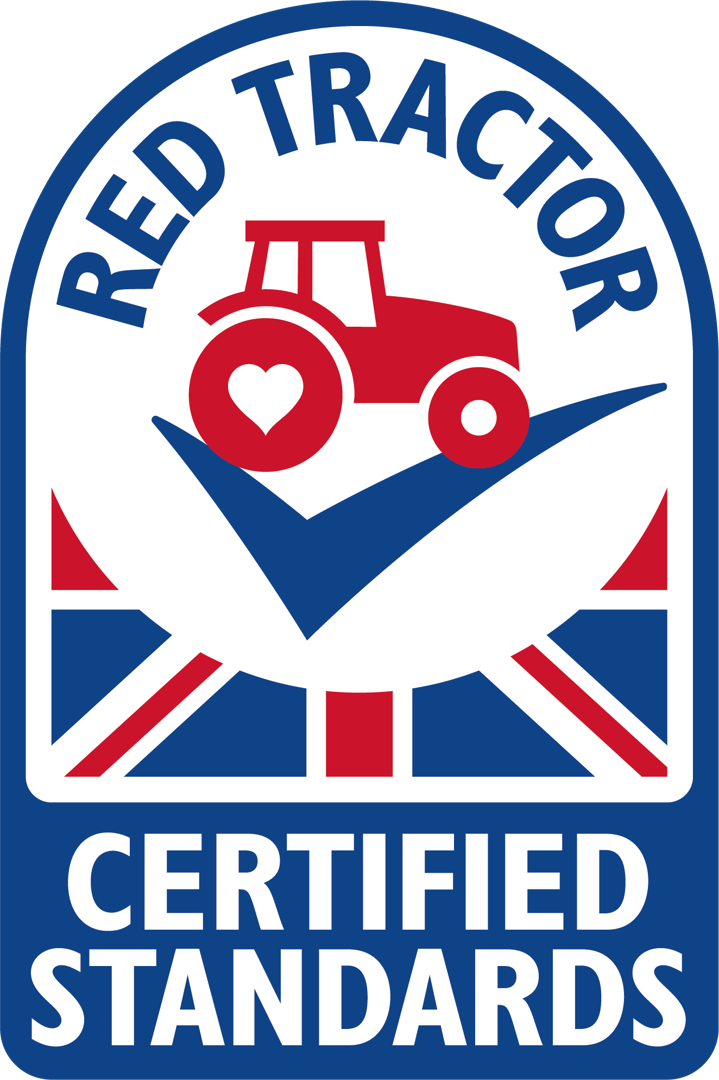



Online ordering login
Enter your login details below and start ordering today.
Register Here
Forgot Password?

